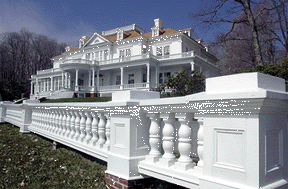Umatilla, FL
[We're getting more and more plugged into society here. Mostly, outside the RV park. We are working on a woman's club called Fluently Spoken, and on organizing an Intelligence Squared style debate with a group of men. Necessary that, is knowledge of how Toasmaster's works. So, Libby joined the Toasting Ocala club to learn. She did her first speech last night. I think she did marvelously on the delivery.
p.s. Do you want me to continue blogging about the prisons?
Here's Libby's speech]
Madam toastmaster, fellow toastmasters, and honored guests. Most of my story is intertwined with Dick, my husband of 53 years. His career gave us the opportunity to live many places and to meet many people.
PAUSE
Twice, our family moved to Sweden. We became immigrants, which exposed us to another culture.
We learned how alien local customs can feel. Let me give you a few examples:
I was fortunate that our family never needed a second income. That left me free to pursue my life’s goal of being useful to family, friends, and community. I was involved with Headstart, Parents Anonymous, local libraries, ESL, ARC, a fireman’s auxiliary, and Habitat for Humanity.
When Dick and I retired at age 60, we went sailing. Our home for 12 years was a 32-foot sailboat named Tarwathie. I trusted Dick’s seamanship, and Tarwathie’s seaworthiness. So, I was willing to step aboard as a novice. While learning to sail an ocean-going vessel, I made many errors.
Now we have
Madam toastmaster, fellow toastmasters, and honored guests. Most of my story is intertwined with Dick, my husband of 53 years. His career gave us the opportunity to live many places and to meet many people.
PAUSE
Twice, our family moved to Sweden. We became immigrants, which exposed us to another culture.
We learned how alien local customs can feel. Let me give you a few examples:
- · reindeer meat on pizza,
- · horse meat for cold cuts,
- · and when waiting in line, having people invade your personal space.
I was fortunate that our family never needed a second income. That left me free to pursue my life’s goal of being useful to family, friends, and community. I was involved with Headstart, Parents Anonymous, local libraries, ESL, ARC, a fireman’s auxiliary, and Habitat for Humanity.
When Dick and I retired at age 60, we went sailing. Our home for 12 years was a 32-foot sailboat named Tarwathie. I trusted Dick’s seamanship, and Tarwathie’s seaworthiness. So, I was willing to step aboard as a novice. While learning to sail an ocean-going vessel, I made many errors.
- · I let her get off course.
- · I let the wind out of the sails.
- · I got sea sick.
- · I ran Tarwathie aground, sometime more than once in the same spot.
- I learned some important things while sailing.
- · I learned that sailors are helpful friendly people.
- · I learned that rowing a dinghy is fun.
- · I learned to pay attention to the wind! Too little wind is frustrating, and too much wind is dangerous.
- · I learned that schedules are useless. Wind, current, tide, and weather determine where you will be, and when you will get there.
- · I learned that at sea, if something is not secured, it will break or be lost overboard.
- · And, I learned that that once we hit our 70s, we no longer had the stamina for the sailing life.
Now we have
- · a winter RV in Florida
- · a summer RV in Vermont,
- · and a tent for travelling around between times.





































